The Best Science Kits for Kids in 2023 - Discover Fun Experiments for All Ages
Welcome to the incredible world of science kits for kids, where learning and fun go hand in hand!

Welcome to the incredible world of science kits for kids, where learning and fun go hand in hand! With countless themes, cutting-edge technologies, and a variety of age-appropriate options, there’s a perfect science kit out there for every curious child. In this blog post, we’ll guide you through the best science kits available, their engaging themes, and how to choose the one that aligns with your child’s interests and developmental stage.
Key Takeaways
- Discover the perfect science kit for your child of any age with our list of top science kits, and ignite their curiosity & love for learning!
- Explore chemistry, biology & physics through exciting hands-on activities with innovative features like augmented reality and virtual reality.
- Ensure a safe experience at home by following essential safety tips such as adult supervision, safety glasses use and proper handling materials. Get excited about DIY experiments using household items!
Top Science Kits for Various Ages
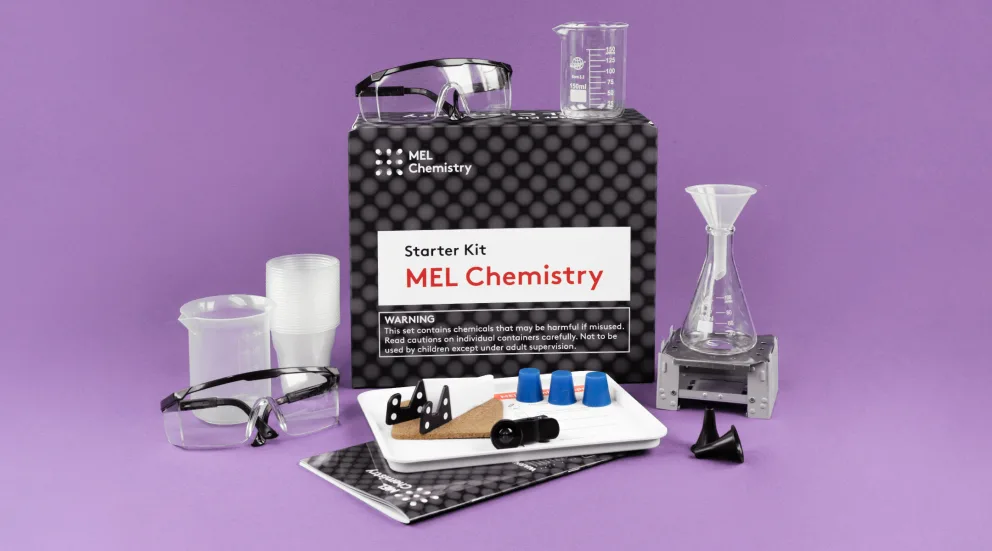
Quality science kits are instrumental in igniting curiosity and fostering learning in children of all ages. A first science kit helps kids explore scientific concepts and conduct hands-on experiments, making science fun and engaging. With a science kit for kids, they can dive into the world of scientific discovery and develop a lifelong love for learning. One such provider of high-quality science kits is MEL Science, known for their immersive and interactive approach to science education.
To help you find the perfect science kit for your child, we’ve curated a list of the best science kits for different age groups, including preschoolers, elementary school kids, and middle school students.
Preschoolers (3-5 years)
When it comes to science kits for preschoolers, it's essential to focus on simple experiments and hands-on activities. Young children can benefit immensely from exploring science through everyday household items. For instance, they can conduct multiple exciting experiments using common items like baking soda or vinegar. The key is to provide clear, illustrated, step-by-step instructions that explain the fascinating science behind these household experiments. Remember, adult supervision is highly recommended for this age group to ensure a safe and enjoyable learning experience.
Another great tool for young learners is a beginner-friendly compound microscope kit. This kit offers six adjustable magnifications up to an incredible 1200x and comes with 49 accessories covering various scientific disciplines. It provides a comprehensive learning experience where kids can apply the scientific method and conduct experiments. Documenting their results for future analysis is an essential part of this learning process. With adult supervision, little scientists can explore the microscopic world and develop a love for science.
Elementary School (6-10 years)
Science kits that cover a range of subjects and offer engaging experiments are crucial in fostering STEM skills among elementary school kids. A prime example of such a kit is the MEL Science kit, perfect for kids aged 6 to 10 years. This kit features fascinating chemistry experiments!
For children fascinated by space and the solar system, MEL Science also offers a fantastic space-themed kit. This kit is suitable for middle school kids and covers diverse scientific fields, including the solar system and other intriguing topics. With MEL Science kits, elementary school kids can enjoy hands-on experiments while honing problem-solving skills and gaining a deeper understanding of scientific concepts..
Middle School (11-14 years)
Middle school students are ready to tackle more advanced science kits that offer intricate experiments and delve deeper into scientific concepts. One such kit is the MEL Chemistry kit, which immerses kids in a virtual laboratory environment, allowing them to explore and experiment with a variety of chemical reactions. Another excellent choice for this age group is the Klutz LEGO Gear Bot kit, which lets kids delve into the world of mechanical engineering by building eight physics-driven kinetic creatures using a mix of LEGO bricks and papercraft.
Engaging with these advanced science kits, such as the MEL Chemistry kit, can help middle school students sharpen their critical thinking skills, understand complex scientific concepts, and foster a love for learning. The perfect science kit for your child is out there, ready to inspire their inner scientist!
Engaging Themes in Science Kits
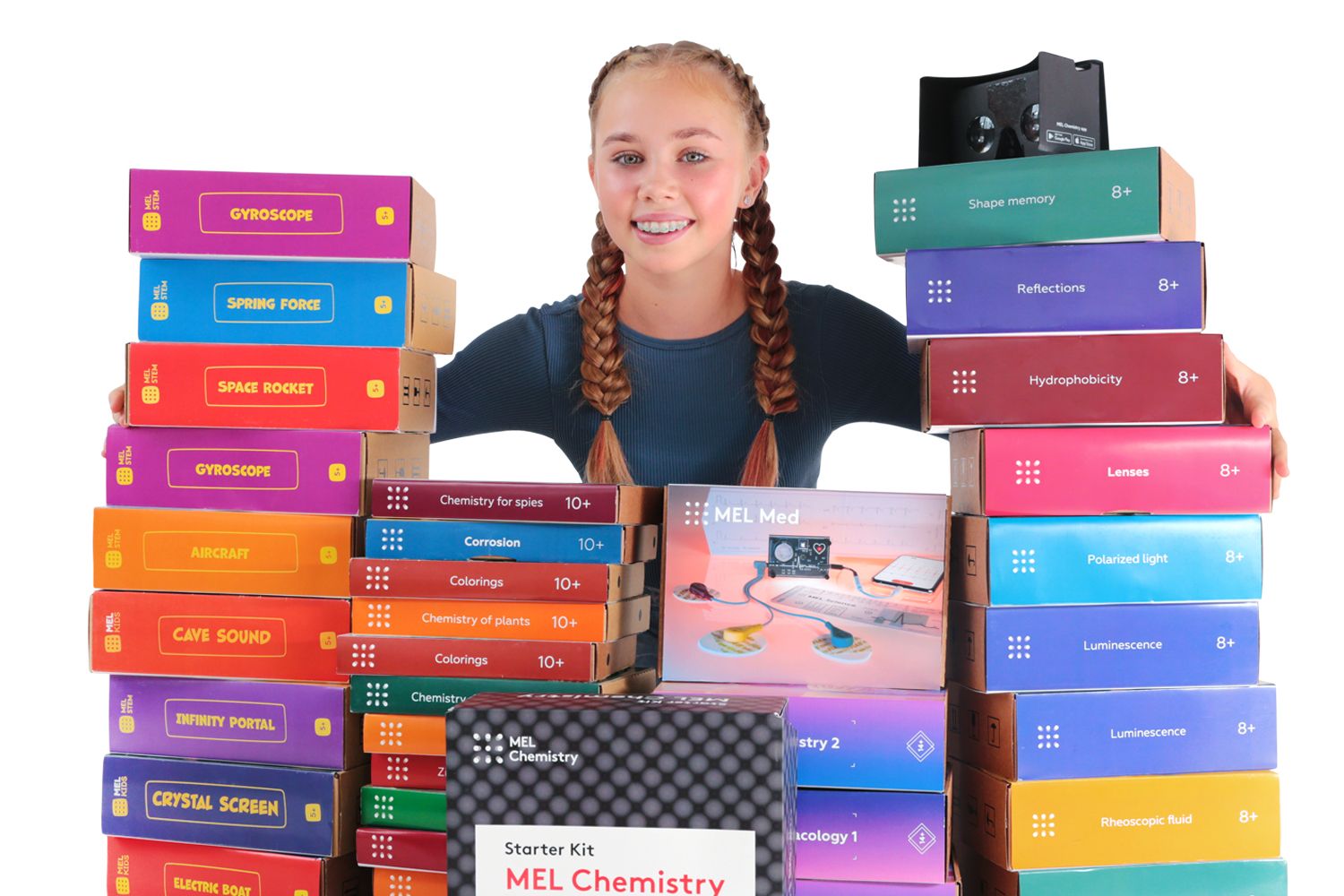
To cater to different interests and learning goals, science kits come in a variety of themes, including chemistry, biology, and physics. From exploring chemical reactions to delving into the world of plants and animals, there’s a science kit out there to spark curiosity and engage young minds.
Next, we will discuss some popular themes in science kits and their potential to provide unique learning experiences for budding scientists.
Chemistry Adventures
Chemistry-themed science kits like the MEL Chemistry kit allow kids to dive deep into the captivating world of chemical reactions, mixtures, and compounds. Through engaging experiments that involve the use of test tubes and other lab equipment, kids can learn about the properties and interactions of different substances. The MEL Chemistry kit, for instance, offers a variety of captivating experiments that kids can perform right at home.
These chemistry adventures with the MEL Chemistry kit enable children to explore the laws of chemistry in an interactive and fun-filled way, nurturing their affinity for science and learning. With hands-on experiments, young chemists can develop their problem-solving skills and deepen their understanding of scientific concepts.
Physics and Engineering Wonders
Physics and engineering-themed science kits, like the MEL Physics kit, teach kids about the principles of motion, energy, force, and engineering through exciting projects and experiments. Building bridges, constructing robots, and creating electrical circuits are just a few examples of the hands-on activities offered by the MEL Physics kit.
These physics and engineering adventures with the MEL Physics kit can help children develop problem-solving skills, critical thinking abilities, and creativity while gaining a better understanding of the principles that govern the physical world. From designing and building structures to exploring the laws of motion, the MEL Physics kit offers endless opportunities for learning and fun.
Innovative Features in Science Kits
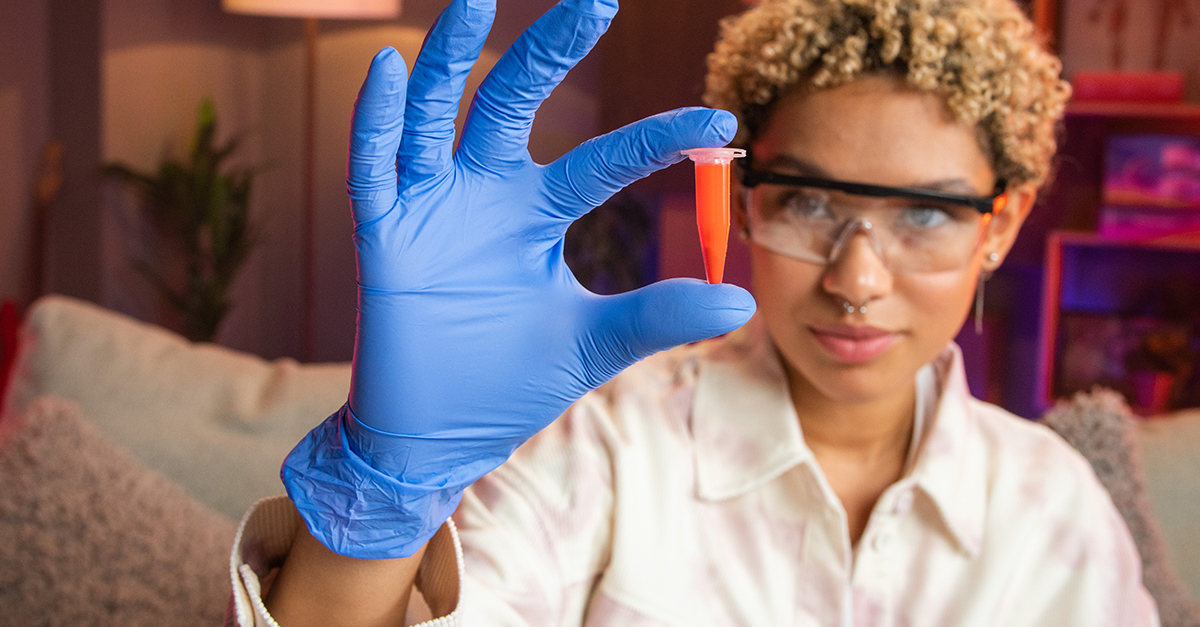
In addition to the engaging themes, some science kits incorporate cutting-edge features that enhance the learning experience. Technologies such as augmented reality and virtual reality can offer interactive and immersive experiences, allowing kids to explore scientific concepts in new and exciting ways.
Next, we will delve into how these innovative features enhance science kits to offer unique learning experiences for children across all age groups.
Augmented Reality
Augmented reality (AR) and virtual reality (VR) are groundbreaking technologies that MEL Science has successfully incorporated into their science kits. This provides an interactive and immersive learning experience that transforms the way kids engage with scientific concepts.
AR, for instance, is used in MEL Science kits to overlay computer-generated images and sound onto the real world. This allows children to interact with science in a completely new and exciting way, enhancing their understanding and engagement with the subject matter.
On the other hand, MEL Science's use of VR technology transports children to different environments. This provides a unique, hands-on learning experience that brings scientific concepts to life. For example, the Virtual Reality Physics Lab Kit enables children to explore the principles of physics in a simulated laboratory environment.
The integration of AR and VR technology in MEL Science kits offers children an immersive and engaging learning experience that ignites their curiosity and fosters a love for science. By exploring scientific concepts in a virtual world, kids can gain a deeper understanding of the subject matter while having fun.
Choosing the Perfect Science Kit
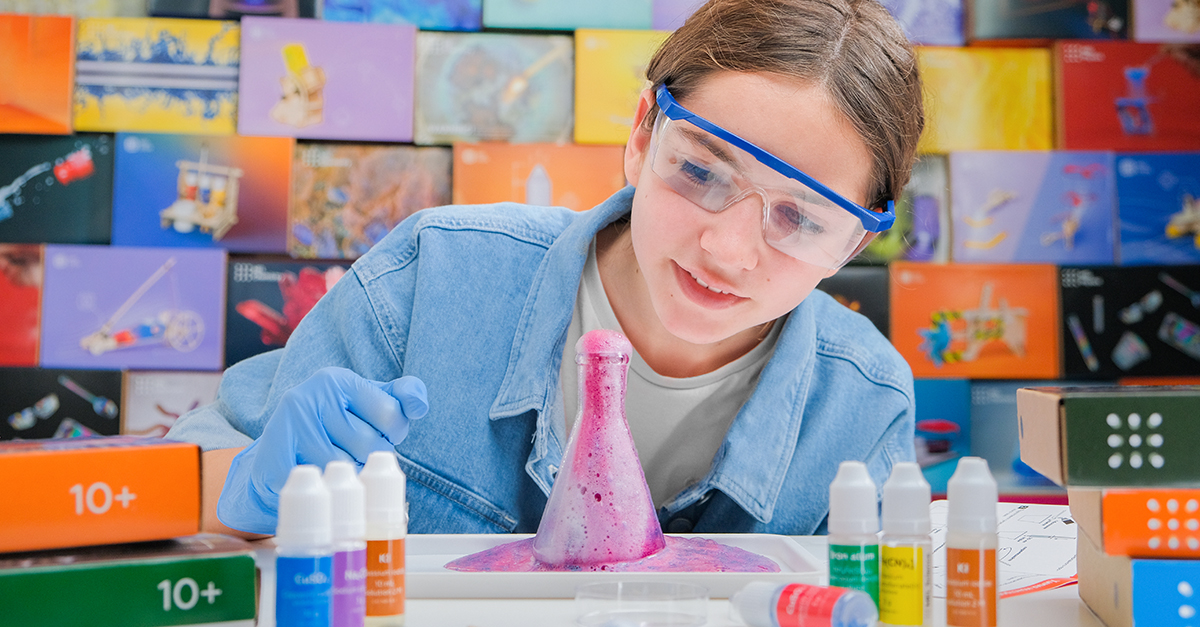
To find the ideal science kit for your child, it’s important to consider factors such as age appropriateness, interest alignment, and ease of use. By selecting a kit that matches your child’s developmental stage, aligns with their interests, and provides clear instructions, you can ensure a smooth and enjoyable learning experience.
Next, we will share some tips to assist you in choosing the perfect science kit considering these aspects.
Age Appropriateness
Considering the recommended age range when selecting a science kit is vital to ensure its suitability for your child’s developmental stage. Science kits are designed to cater to different age groups, with varying levels of complexity and safety considerations.
By choosing an age-appropriate kit, you can ensure that your child can safely and effectively engage with the experiments and activities, fostering their love for science and learning.
Interest Alignment
Choosing a science kit that aligns with your child’s interests can keep them engaged and motivated to learn. If your child loves animals, for example, look for a biology-themed kit that focuses on the animal kingdom.
By selecting a kit for kids that caters to your child’s passions, you can help to cultivate their curiosity and enthusiasm for science and learning.
Ease of Use and Clear Instructions
A key factor in choosing the perfect science kit is ensuring it comes with easy-to-follow instructions and user-friendly materials. Clear instructions contribute to a seamless learning experience, enabling your child to conduct experiments effectively and explore scientific concepts.
By selecting a kit with well-explained, step-by-step instructions, you can help create a fun and educational experience for your budding scientist.
Safety Tips for Science Experiments at Home
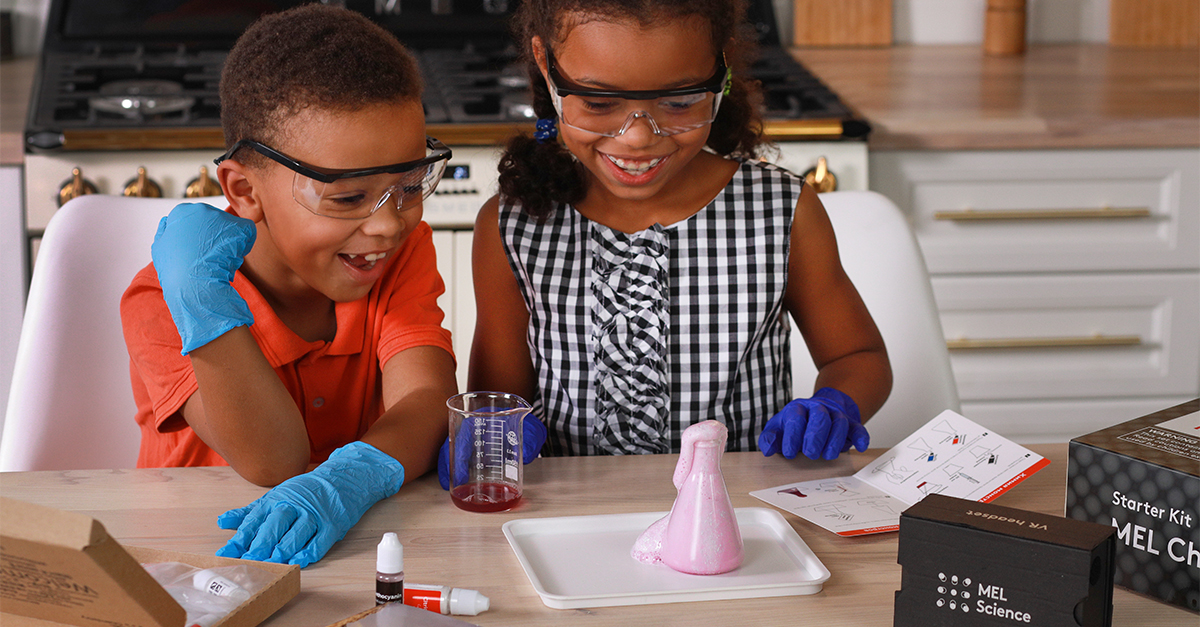
As your child begins their scientific journey, following safety precautions during their own experiments, especially home science experiments, is of paramount importance.
Next, we will discuss important safety measures like adult supervision, use of protective gear, and proper handling of materials to guarantee a safe and enjoyable learning environment for your child.
Adult Supervision
Adult supervision is a paramount safety measure when conducting science experiments at home. An adult should always be present to supervise and assist with experiments, especially when using potentially hazardous materials.
By ensuring proper supervision, you can help to guarantee that the experiment is conducted safely and correctly, allowing your child to fully enjoy their scientific exploration.
Safety Glasses and Protective Gear
Encouraging your child to utilize safety glasses and other protective gear during experiments can help prevent accidents and injuries. Safety goggles, gloves, and lab coats can help protect your child from potential hazards while they explore the fascinating world of science.
By instilling the importance of safety precautions, you can foster a responsible and safety-conscious attitude towards science experiments.
Proper Handling of Materials
Imparting knowledge on how to handle materials safely and responsibly is a vital part of conducting science experiments at home. This includes proper storage and disposal of chemicals and waste, as well as adhering to the instructions provided by the science kit.
By emphasizing the importance of proper handling, you can help your child develop safe habits and ensure a secure learning environment.
DIY Science Experiments with Common Household Items
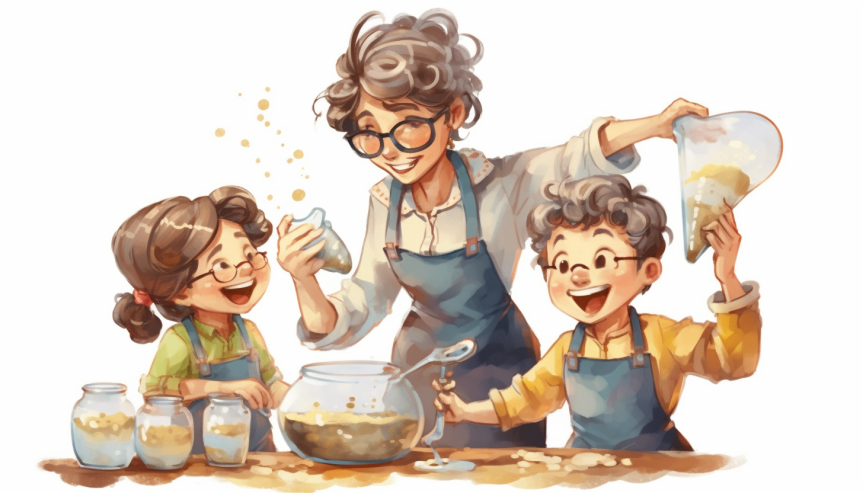
Beyond the use of science kits, fun experiments and educational science experiments can also be created at home using everyday materials. This can foster creativity and curiosity while allowing your child to explore scientific concepts in a familiar environment. For example, you can conduct a simple experiment to explore density by layering different liquids, such as water, oil, and honey, in a glass container. Alternatively, you can create a homemade volcano using baking soda and vinegar to explore chemical reactions.
These DIY science experiments can provide a fun and engaging way for your child to learn about the world around them while using readily available materials. By combining the power of science kits with the creativity of DIY experiments, you can help your child develop a lifelong love for science and learning.
Summary
In conclusion, science kits offer an incredible opportunity for children to explore the world of science through engaging themes, cutting-edge technologies, and hands-on experiments. By carefully selecting the perfect science kit based on age appropriateness, interest alignment, and ease of use, you can foster your child’s curiosity and love for learning. So, go ahead and embark on a thrilling scientific journey with your child, and watch their passion for discovery grow!
Frequently Asked Questions
What is science kit?
Science kits are an exciting way to learn, combining knowledge and fun in one package! With detailed instructions and facts on physical science, these kits are sure to be a hit with kids and adults alike.
These kits provide an opportunity to explore the world of science in a hands-on way. They come with all the materials needed to complete experiments and activities, as well as detailed instructions.
How to make a science kit at home?
Create a homemade science kit for the kids by collecting items such as a plastic tub, olive oil, raisins, safety goggles, balloons, white coffee filters, a box of tea, and Alka Seltzer tablets - it’s fun, educational, and easy to assemble!
Assemble the items in the plastic tub and let the kids explore the science behind the items. They can use olive oil and raisins to explore density, the safety goggles to protect their eyes, the balloons to explore air pressure, the white coffee filters to explore filtration, the box of tea to explore color, and the Alka Seltzer tablets to explore density.
What are the benefits of using science kits?
Science kits are an exciting way to help children learn, developing their critical thinking skills, problem-solving abilities and creativity.
They provide an engaging way to explore the world around them, and can help children develop a lifelong interest in science.
Science kits can be used to explore a variety of topics, from biology and chemistry to science.
How do I choose the perfect science kit for my child?
Choose a science kit that caters to your child’s age, interests, and ability level for an exciting and easy science experience!
Are there any safety precautions I should follow when conducting science experiments at home?
Yes, when conducting science experiments at home, make sure you have adult supervision, use safety glasses and protective gear, and teach proper handling of materials for safety.

